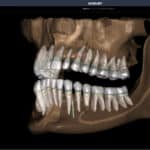Summary: Marketing remains crucial for orthodontic practices, but balancing it with patient privacy can be challenging. With new guidance from the U.S. Department of Health and Human Services (HHS), practices can implement five specific steps to maintain HIPAA compliance while effectively using marketing tools.
Key Takeaways:
- Use individual logins for employees to control access to protected health information (PHI) and prevent unnecessary exposure.
- Educate your staff to ensure they understand HIPAA regulations, their responsibilities, and how tech partners impact compliance.
- Work only with vendors that sign business associate agreements (BAAs) to ensure they uphold HIPAA standards when handling patient information.
By Chris Nelson
Marketing remains one of the most essential ways for orthodontic practices to thrive in today’s competitive market—increasing brand exposure, attracting new patients, and achieving a strong online reputation. However, marketing in the orthodontic field also raises an important question: Can patient privacy and marketing data actually coexist?
It may seem counterintuitive, but the U.S. Department of Health and Human Services (HHS) recently outlined how healthcare providers can use the insights gained from marketing tools like call tracking while still maintaining HIPAA compliance. With this new guidance creating clear guidelines for how technology services can safely partner with healthcare providers, there are five specific steps orthodontic practices can take themselves to protect patient health information (PHI).
1. Educate your staff
The burden of HIPAA compliance falls squarely on your staff’s shoulders, so education should be your first priority. HIPAA training should be a key component of your onboarding, and all staff should be required to complete mandatory continuing education. Regulations are constantly evolving and growing to meet privacy challenges, so equip your staff with all the information they need to maintain HIPAA compliance.
This includes knowing who is covered by HIPAA, when the obligation to maintain privacy begins (Hint: It’s before they’re actually a patient), and the potential consequences if any rules are violated. Not only should your staff know the ins and outs of HIPAA, but they should be aware of how all of their tech partners fit into the patient privacy puzzle.
2. Only work with vendors that will sign business associate agreements
HIPAA compliance is your responsibility, but the tech partners you choose will play a big role in helping you maintain it. In March 2024, HHS instructed healthcare providers to only work with tech partners that are willing to sign a business associate agreement (BAA). This agreement allows the tech provider to collect and store PHI on your behalf and obligates them to take certain steps to support HIPAA compliance.
Be sure any technology vendors you work with are willing to sign a BAA. With this in place, these vendors are obligated to comply with HIPAA controls within their service offerings, which ensures that your orthodontic practice isn’t exposed to potential fines or litigation.
3. Never share user and log-in credentials
Orthodontic practices manage high volumes of PHI, and not all employees need that access. Every user should have unique logins and credentials so that only the people who need to see PHI will have access to it. Using individual logins eliminates the potential for PHI to be accidentally exposed to employees who don’t need access to that information.
For example, your staff may need to see a patient’s name and birthdate to update a chart. Their login would allow them to see a full transcript of a call. But your marketing director only needs to see how a patient was treated on the phone. In that case, the marketing director’s credentials would allow them to see a redacted version of a phone call, rather than the full transcript that provides PHI.
4. Disclose only ‘need-to-know’ PHI for non-treatment purposes
If you’re working with another fully HIPAA-compliant provider to coordinate treatment, sharing PHI is a necessity. But for everyone outside the sphere of treatment, PHI should be on a need-to-know basis. Use auto redaction to share important details without exposing your patients to security risks.
Billing and scheduling are two places where auto-redaction can be particularly valuable. This feature allows you to use the information you need—like billing codes and identification—without exposing provider notes on specifics of patient care.
5. Plan for human error
It’s a common problem: A staff member steps away for a cup of coffee or starts a conversation with a coworker while looking at patient information. Despite your best efforts, human error can lead to exposed information. However, an easy solution includes 30-minute auto timeouts for all access.
This is especially valuable in the front office, where numerous job functions work in tandem or staff members are wearing multiple hats. With billing, scheduling, and patient care in close quarters, it’s easy to forget to log out. Auto timeouts guard against the most common denominator—human error.
As technology continues to advance at a rapid pace, its role in orthodontic marketing will only grow more significant. By embracing this technology and implementing these specific steps, orthodontic practices can better ensure they’re able to stay ahead of an increasingly competitive market while keeping your practice safe and patient information secure. OP
Photo: ID 364020808 © Can Tuna Ozturk | Dreamstime.com

Chris Nelson is the senior manager of vertical marketing at CallRail, where he brings more than 15 years of experience as a marketing and strategy leader including B2B and B2B2C experience in SaaS, professional services, and consumer durables. He practiced as a business lawyer for several years before transitioning into the business side full-time.










